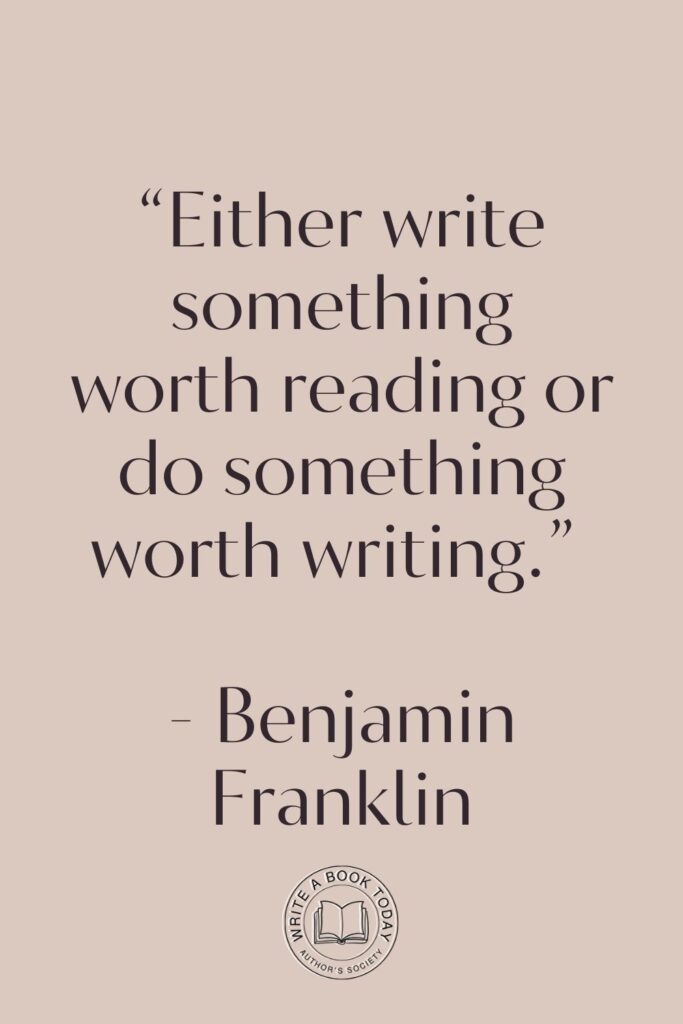Have you ever marveled at a tapestry, where each thread weaves seamlessly into a vibrant picture?
This is much like what skilled writers achieve when they master the art of juggling multiple storylines. It’s a dance of creativity and organization that, when done right, can transform a simple narrative into a rich, multifaceted experience.
But how do you keep all those storylines from tangling into a confusing mess?
Let’s dive into this enchanting yet challenging aspect of storytelling, unraveling techniques to maintain clarity and captivate your readers.
Understanding the Challenge of Juggling Multiple Storylines
Writing with multiple storylines can feel like walking a tightrope, balancing character development, plot progression, and thematic depth. However, the allure of this approach lies in its potential to create layered narratives that resonate on various levels.
Writers often choose this path to explore diverse perspectives, enrich their worlds, or simply to keep their readers on their toes. Yet, without careful handling, these ambitious narratives can easily spiral into confusion.
Feeling lost with your debut novel?
Fiverr Pro connects you with expert editors, designers, and marketers – everything you need to get your book ready for success!

Why Writers Choose Multiple Storylines
The choice to weave multiple storylines isn’t just a stylistic preference; it’s a powerful narrative technique that serves several purposes. By presenting varied perspectives, writers can explore complex themes and characters in greater depth.
This method allows for a broader exploration of the world within the story, offering readers a panoramic view of events. Furthermore, multiple storylines can heighten suspense, as readers become eager to see how these separate threads will converge.
Consider using multiple storylines to enhance character development. By exploring different characters’ journeys simultaneously, you can reveal contrasting motivations and conflicts.
This adds depth to your characters and keeps readers engaged with the diverse perspectives offered. It’s an effective way to highlight the multifaceted nature of your story’s world.
Common Pitfalls and How to Avoid Them
While the rewards are enticing, juggling multiple storylines comes with its own set of pitfalls. One common mistake is losing track of individual plot threads, leading to unresolved arcs or inconsistent character development.
Another challenge is maintaining pacing across different storylines, ensuring each one receives adequate attention without overshadowing the others. To avoid these issues, it’s crucial to plan meticulously and remain flexible, allowing the narrative to evolve organically.
To prevent confusion, establish clear connections between storylines early on. Use thematic elements or shared events to tie them together, ensuring readers understand how each plot contributes to the overall narrative. Additionally, be mindful of transitions between storylines, using cues such as chapter breaks or character perspectives to guide readers smoothly from one arc to another.

Essential Narrative Techniques for Clarity
Crafting a narrative with multiple storylines demands more than just creativity; it requires strategic planning and execution.
By employing specific narrative techniques, writers can maintain clarity and coherence, guiding readers through the intricate web of their story. From creating distinct character arcs to utilizing time and space effectively, these strategies ensure that each storyline stands out while contributing to the whole.
Creating Distinct Character Arcs
At the heart of any compelling story are its characters. When dealing with multiple storylines, it’s essential to craft distinct character arcs that are both engaging and memorable.
Each character should have a unique voice, goals, and challenges, allowing readers to connect with them on an individual level. By clearly defining these elements, you can prevent characters from blending into one another, ensuring that each arc remains distinct and impactful.
Consider using character-driven plot points to highlight the differences between arcs. For example, if one storyline focuses on a character’s quest for redemption, contrast it with another’s pursuit of revenge.
This not only adds depth to your characters but also creates tension and intrigue as readers anticipate how these opposing motivations will intersect.
Utilizing Time and Space Effectively
Time and space are powerful tools in the writer’s arsenal, especially when managing multiple storylines. By strategically manipulating these elements, you can enhance narrative tension and maintain reader interest.
Consider using non-linear timelines to reveal key information gradually, or employ spatial shifts to explore different settings and cultures within your story. These techniques can add complexity and richness to your narrative, drawing readers deeper into your world.
Experiment with time jumps to create suspense and intrigue. By revealing pivotal moments out of sequence, you can keep readers guessing about the connections between storylines. This approach also allows for dramatic reveals and plot twists, adding excitement and unpredictability to your narrative.
Google Docs is for notes. Scrivener is for novels. Upgrade your writing game and try it for free today!

Employing Parallel Plot Structures
Parallel plot structures can be an effective way to manage multiple storylines, providing a framework that guides readers through the narrative. This technique involves developing two or more plots that run alongside each other, often mirroring or contrasting in significant ways.
By establishing parallels between storylines, you can create thematic cohesion and highlight key differences, enriching the reader’s understanding of your story.
To implement this technique, identify key themes or motifs that resonate across storylines. Use these elements to draw connections between plots, allowing readers to see how different arcs reflect or challenge each other. This approach not only enhances thematic depth but also encourages readers to engage with the narrative on a deeper level.
Engaging Your Readers Through Strategic Writing
Engaging readers is the ultimate goal of any storyteller, and with multiple storylines, this task becomes both more challenging and rewarding.
By employing strategic writing techniques, you can capture and sustain reader interest, guiding them through the complexities of your narrative. From building suspense to crafting satisfying resolutions, these strategies ensure that your readers remain invested in every twist and turn.

Building Suspense and Tension
Suspense is a vital ingredient in keeping readers hooked, and with multiple storylines, the opportunities to build tension are manifold. Consider staggering the revelation of key information across storylines, creating a sense of anticipation as readers piece together the puzzle.
Use cliffhangers strategically, leaving each storyline at a critical juncture before shifting focus to another. This technique not only maintains interest but also encourages readers to continue turning pages, eager to see how events unfold.
Use foreshadowing to build anticipation across storylines. By planting subtle hints and clues, you can create a sense of inevitability that draws readers in. This technique also allows for dramatic payoffs and plot twists, enhancing the overall impact of your narrative.
Maintaining Reader Interest with Cliffhangers
Cliffhangers are a tried-and-true method for maintaining reader interest, and when used effectively, they can elevate the tension and drama of your narrative.
By ending chapters or sections on a suspenseful note, you encourage readers to continue, eager to discover the outcome. In the context of multiple storylines, cliffhangers can be used to transition between arcs, keeping each plot fresh and engaging.
To maximize the impact of cliffhangers, ensure that each one is meaningful and relevant to the story. Avoid using them arbitrarily, as this can lead to reader fatigue. Instead, focus on creating genuine moments of suspense that drive the narrative forward and deepen reader investment.
No marketing platform? No social following? No problem!
Publisher Rocket helps you market your debut novel like a pro.
It’s a gamechanger for debut authors – try it today!


Crafting Satisfying Resolutions for Each Thread
While building suspense is crucial, it’s equally important to provide satisfying resolutions for each storyline. Readers invest time and emotion into your narrative, and they deserve a payoff that feels earned and fulfilling.
When crafting resolutions, ensure that each storyline concludes in a way that aligns with its themes and character arcs, offering closure and insight.
Consider using a table to outline the key elements of each storyline, including its central conflict, climax, and resolution. This can help you visualize the overall structure of your narrative and ensure that each arc is given the attention it deserves. By providing a satisfying conclusion, you leave readers with a lasting impression and a sense of completion.
| Storyline | Central Conflict | Climax | Resolution |
|---|---|---|---|
| Redemption Arc | Struggle for forgiveness | Confrontation with past | Acceptance and peace |
| Revenge Arc | Pursuit of vengeance | Showdown with antagonist | Realization and change |
Practical Writing Strategies to Implement
While creative inspiration is invaluable, practical strategies are essential for executing a successful multi-plot narrative.
By implementing effective writing strategies, you can streamline the writing process, enhance cohesion, and ensure that each storyline is developed to its full potential. From outlining your plots to using visual aids, these techniques provide the foundation for a compelling and organized narrative.
Outlining Your Storylines
Outlining is a critical step in managing multiple storylines, providing a roadmap that guides the writing process. By creating a detailed outline, you can map out the key events, character arcs, and thematic elements of each plot, ensuring that they align and complement each other.
This approach not only helps you maintain consistency but also allows you to identify potential plot holes or inconsistencies before they become problematic.
Use color-coded outlines to differentiate between storylines. This visual aid can help you track the progression of each plot and ensure that they receive equal attention. It’s also a useful tool for identifying connections between arcs, allowing you to weave them together seamlessly.

Using Visual Aids and Tools
Visual aids can be invaluable when managing complex narratives, providing a clear overview of your story’s structure and progression.
Consider using tools like flowcharts, mind maps, or storyboards to visualize the relationships between storylines and characters. These tools can help you identify patterns, track character development, and ensure that each plot is cohesive and well-developed.
In addition to traditional visual aids, digital tools like Scrivener or Trello can offer a more dynamic and interactive approach to organizing your narrative. These platforms allow you to rearrange scenes, track changes, and collaborate with others, providing flexibility and control over your writing process.
Iterating and Revising for Cohesion
Revising is an essential part of the writing process, and when dealing with multiple storylines, it becomes even more critical. By iterating and revising your narrative, you can refine each plot, ensuring that they align and complement each other.
This process allows you to address any inconsistencies, enhance thematic depth, and strengthen character development, resulting in a cohesive and compelling story.
Consider using a checklist to guide your revision process, focusing on key elements such as pacing, character arcs, and thematic resonance. This structured approach can help you identify areas for improvement and ensure that each storyline contributes to the overall narrative in a meaningful way.
Feeling lost with your debut novel?
Fiverr Pro connects you with expert editors, designers, and marketers – everything you need to get your book ready for success!

Fostering Community and Sharing Experiences
Writing can be a solitary endeavor, but it doesn’t have to be. By fostering a sense of community and sharing experiences, writers can gain valuable insights, support, and inspiration. Whether through feedback from fellow writers or learning from successful multi-plot stories, these interactions can enhance your skills and enrich your storytelling.
Inviting Feedback from Fellow Writers
Feedback is a powerful tool for growth, providing new perspectives and insights that can enhance your writing.
By inviting feedback from fellow writers, you can gain valuable input on your narrative, identifying strengths and areas for improvement. This collaborative approach not only improves your story but also fosters a sense of camaraderie and support within the writing community.
Join writing groups or workshops to connect with fellow writers. These communities offer opportunities to share your work, receive constructive criticism, and learn from others. Engaging with a diverse group of writers can also expose you to new ideas and techniques, enriching your storytelling skills.

Learning from Successful Multi-Plot Stories
Studying successful multi-plot stories can provide valuable lessons and inspiration for your own writing. By analyzing how these narratives handle multiple storylines, you can identify effective techniques and strategies to apply to your work.
Consider examining the structure, pacing, and character development of these stories, noting how they maintain clarity and engagement throughout.
In addition to reading, consider watching films or series that utilize multiple storylines effectively. Visual storytelling can offer unique insights into narrative techniques, providing a different perspective on how to weave complex plots together.
Encouraging Reader Interaction and Feedback
Engaging with your readers can provide valuable insights and foster a sense of community around your work.
By encouraging reader interaction and feedback, you can gain a deeper understanding of how your narrative resonates with your audience. Consider using platforms like social media or author websites to connect with readers, inviting them to share their thoughts and experiences.
Reader feedback can also provide inspiration for future projects, highlighting themes or characters that resonate strongly with your audience. This interaction not only enhances your storytelling but also builds a loyal and engaged readership.
Conclusion
Mastering the art of juggling multiple storylines is a rewarding endeavor, offering the potential to create rich, layered narratives that captivate and engage readers.
By understanding the challenges and employing effective narrative techniques, writers can navigate the complexities of multi-plot storytelling with confidence and creativity. With strategic planning, community support, and a commitment to refining your craft, you can weave a tapestry of stories that resonates long after the final page is turned.







